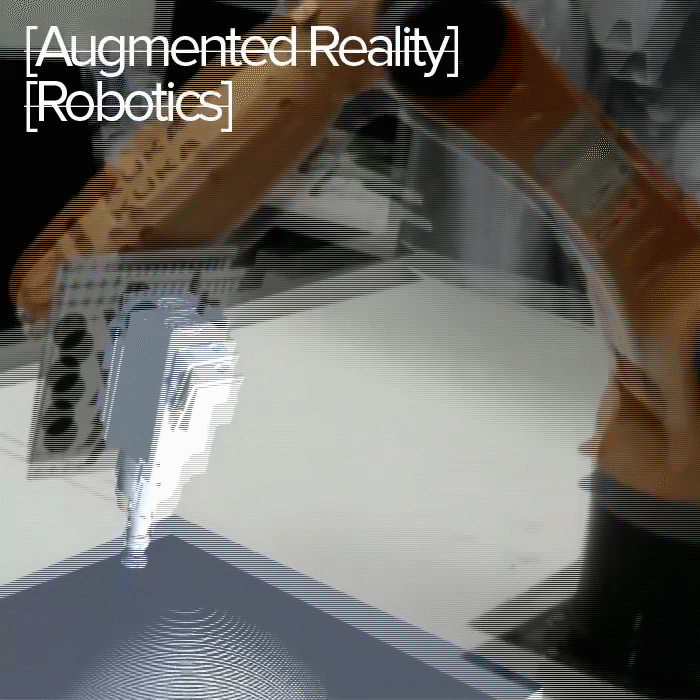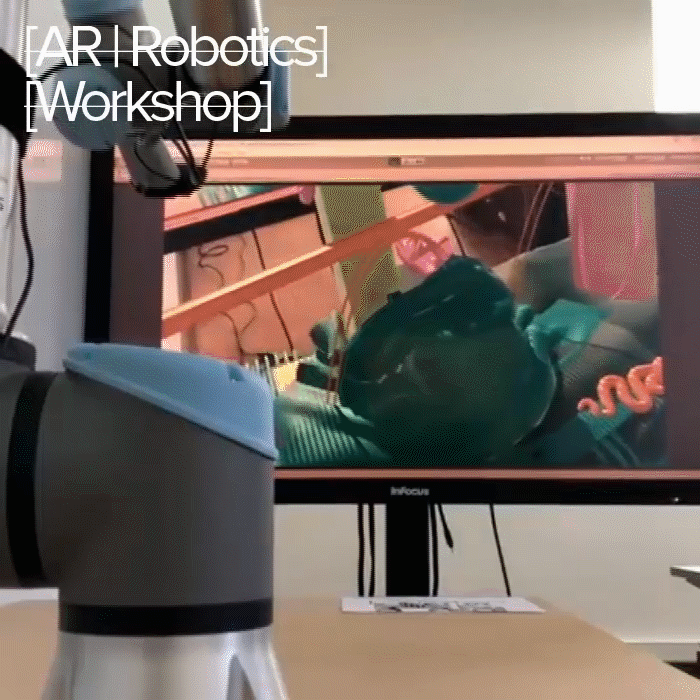





























Mixed Architectural Robotic Interface (MARI)
Robotics + Augmented Reality
This investigation presents a project-based research study using a new hybrid augmented-reality platform called the Mixed Architectural Robotic Interface (MARI). Using MARI as a mixture of different software and hardware platforms, ranging from design/modeling software, simulation engine, and an AR application, the designer, would be able to evaluate the possibilities/limitations of the fabrication, in real-time, and as part of the design process. This method advances the designer’s understanding of the fabrication equipment as inputs for the design decision-making process.
This investigation demonstrates the potential of a virtual/actual hybridized platform as a new medium to design, simulate, and evaluate, to enhance the digital design and digital fabrication. Introducing the possibility of real-time communication between the digital design software and the fabrication platforms as well as the Augmented Reality simulation of the fabrication process--based on the information/feedback from the actual physical set-up, MARI enables designers to test the fabrication process with the fabrication equipment in the early stages of the design process. This method makes it possible to move beyond the traditional limitations of machines pursuing “un-expected creativity,” without any additional time or coast for the process. Using the virtual material for fabrication, MARI reduces the time and cost of having multiple iterations and encourages the hands-on experimental use of the fabrication tool not only as a production tool but also as a design-study tool.
The primary goal of this research was to develop a new hybrid robotic virtual/physical design and fabrication platform. We sought to answer the following questions:
1. How does the introduction of fabrication feedback during the early conceptual stages of design affect the digital-design process?
2. Can designers quickly learn to bridge the digital design and digital fabrication processes through the use of the MARI platform?
3. Does obtaining fabrication feedback through the MARI platform lead to more effective design outcomes?
Considering the existing methods of digital design, simulation, and fabrication, there are unique advantages for each of them separately. However, to fulfill an architectural task, there is a need to use all of them in conjunction. To achieve this unity, one of the main issues to overcome, is to precisely simulate the physical set-up, tools, and their capabilities in the digital environment. Although—in the case of robotic design and production using advanced simulation software platforms such as Rhino 3D and KUKA|Prc makes it possible to precisely create a replication of the existing physical set-up in the digital platform, the simulation is for an ideal condition. In another word, since the digital simulation of the physical set-up (including the robot arm) is based on a fully-operational perfect condition, there is always a tolerance between the digital simulation and the actual set-up because the physical set-up is not perfect. An old servo on one of the axes of the robot, unstable connection of the robot to the mounting surface, and a shaky fabrication table are just some examples of possible imperfections in a physical set-up.
In concoction with the possibilities of Augmented Reality as an extension of the virtual environment into actual, MARI uses an actual robot arm to simulate the fabrication process physically. This would enable the users to examine the fabrication in its real set-up with all the possible limitations of the machine and space that are not necessarily a part of a standard digital simulation. Using physical joint/axis rotation data, it is now possible to digitally simulate the exact configuration of the robot and its end-effector in the digital platform and use that to simulate the fabrication process digitally. The outcome of the simulation overlay on the physical experience using AR solutions in real-time. This Physical simulation would also make it possible for users to understand the potential imperfections and misbehaviors of the robot arm, and use them as part of the design and decision-making process.


